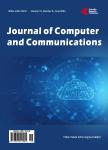Designing a High-Performance Deep Learning Theoretical Model for Biomedical Image Segmentation by Using Key Elements of the Latest U-Net-Based Architectures
Designing a High-Performance Deep Learning Theoretical Model for Biomedical Image Segmentation by Using Key Elements of the Latest U-Net-Based Architectures作者机构:Faculty of General Medicine “Grigore T. Popa” University of Medicine and Pharmacy Iasi Romania Departament Obstetrics and Gynecology Integrated Ambulatory of Hospital “Sf. Spiridon” Iasi Romania Department of Surgery VI “Sf. Spiridon” Hospital Iasi Romania Iasi Departament of Surgery I Regional Institute of Oncology Iasi Romania Department of Radiology “Sf. Spiridon” Hospital Iasi Romania Department of Endocrinology “Sf. Spiridon” Hospital Iasi Romania
出 版 物:《Journal of Computer and Communications》 (电脑和通信(英文))
年 卷 期:2021年第9卷第7期
页 面:8-20页
学科分类:08[工学] 0812[工学-计算机科学与技术(可授工学、理学学位)]
主 题:Combined Model of U-Net-Based Architectures Medical Image Segmentation 2D/3D/CT/RMN Images
摘 要:Deep learning (DL) has experienced an exponential development in recent years, with major impact in many medical fields, especially in the field of medical image and, respectively, as a specific task, in the segmentation of the medical image. We aim to create a computer assisted diagnostic method, optimized by the use of deep learning (DL) and validated by a randomized controlled clinical trial, is a highly automated tool for diagnosing and staging precancerous and cervical cancer and thyroid cancers. We aim to design a high-performance deep learning model, combined from convolutional neural network (U-Net)-based architectures, for segmentation of the medical image that is independent of the type of organs/tissues, dimensions or type of image (2D/3D) and to validate the DL model in a randomized, controlled clinical trial. We used as a methodology primarily the analysis of U-Net-based architectures to identify the key elements that we considered important in the design and optimization of the combined DL model, from the U-Net-based architectures, imagined by us. Secondly, we will validate the performance of the DL model through a randomized controlled clinical trial. The DL model designed by us will be a highly automated tool for diagnosing and staging precancers and cervical cancer and thyroid cancers. The combined model we designed takes into account the key features of each of the architectures Overcomplete Convolutional Network Kite-Net (Kite-Net), Attention gate mechanism is an improvement added on convolutional network architecture for fast and precise segmentation of images (Attention U-Net), Harmony Densely Connected Network-Medical image Segmentation (HarDNet-MSEG). In this regard, we will create a comprehensive computer assisted diagnostic methodology validated by a randomized controlled clinical trial. The model will be a highly automated tool for diagnosing and staging precancers and cervical cancer and thyroid cancers. This would help drastically minimize the time and effort that specialists put into analyzing medical images, help to achieve a better therapeutic plan, and can provide a “second opinion of computer assisted diagnosis.



